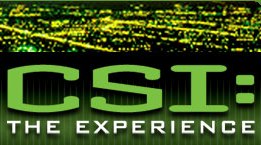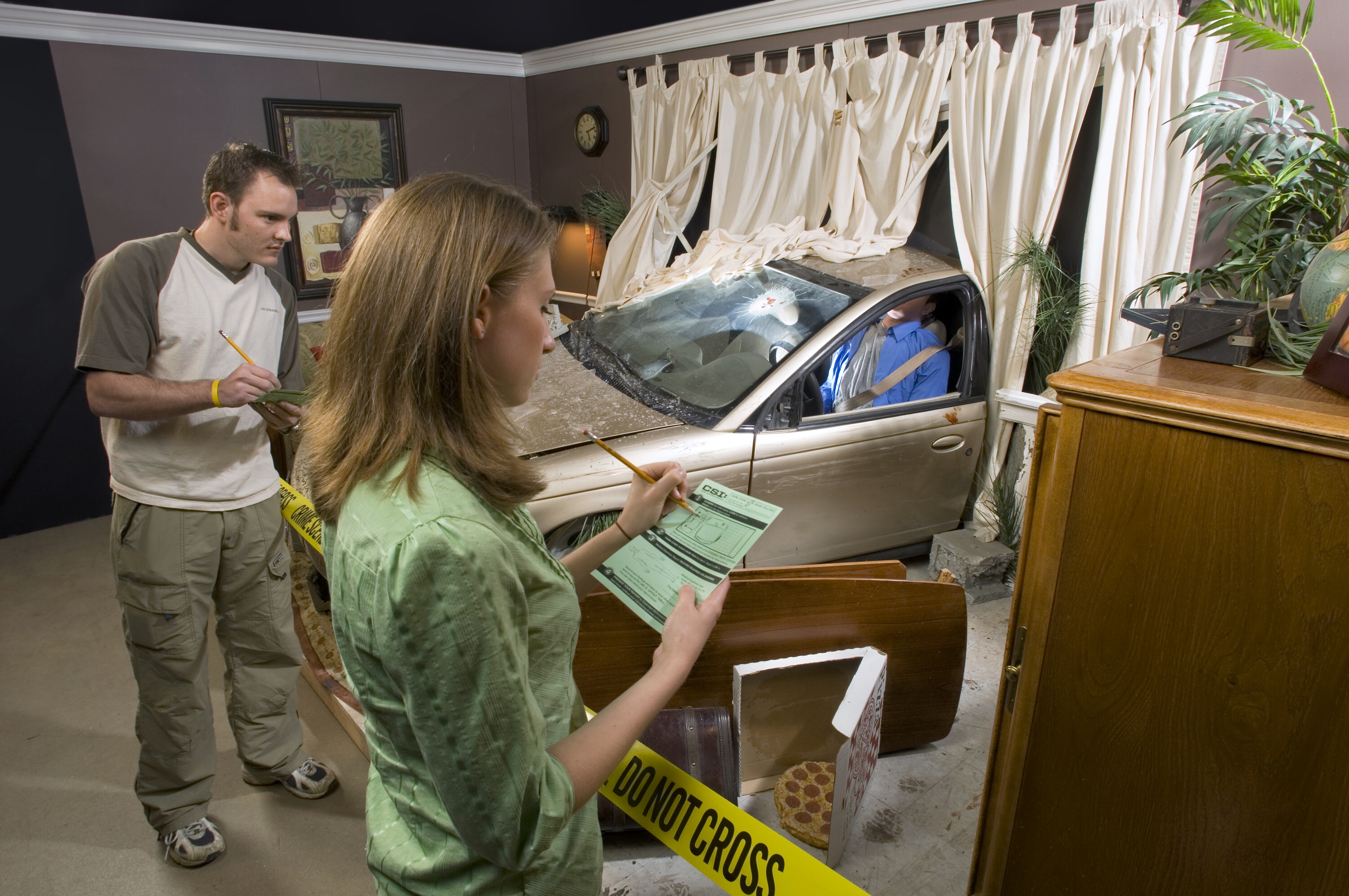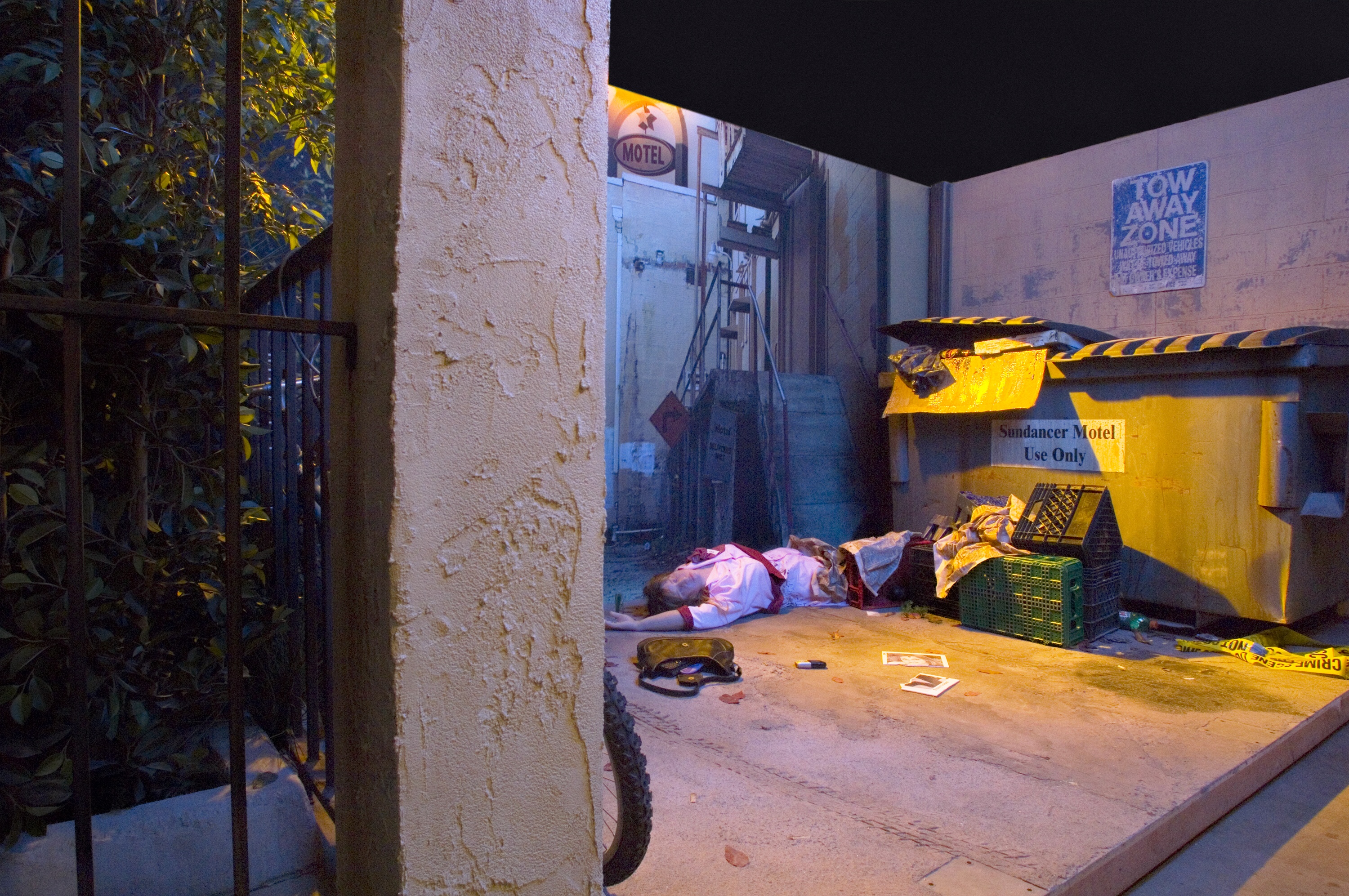 Crime Scenes
Crime Scenes In Houston, Texas, April is the coolest month. Not really. If there's any month that fits that bill it would be closer to February, which is when one of the coolest exhibits touring the country opened in Houston. And April is the last month to check out CSI: The Experience at the city's Museum of Natural Science. If you happen to live in the Houston area, come out and solve a crime this weekend. If you're in other parts of the country, watch for this interactive exhibit in your area. From the museum Web site:
CSI: The Experience immerses guests in hands-on science while leading them through the challenge of solving a crime mystery. The interactive, multimedia exhibit brings to life fundamental scientific principles, numerous scientific disciplines, and the most advanced technology and techniques used today by crime scene investigators and forensic scientists. Through hands-on activities featuring real equipment and multimedia presentations, guests will sample the following science fields and understand the significance of each in cracking crimes.
CSI: The Experience was developed by the Fort Worth Museum of Science and History and Bob Weis Design Island Associates with support from CBS Consumer Products, the cast and crew of the television show, and the National Science Foundation. The traveling exhibit opened in Boston last year and it's already been in Chicago. Its next stop after Houston is in Columbus, Ohio. Through 2010, CSI: The Experience will exhibit in St. Paul, Minnesota; Los Angeles, California; Portland, Oregon; Fort Wort, Texas; and Philadelphia, Pennsylvania.
An overview from the Houston Web site:
Enter the Briefing Theater to watch a fast-paced introduction to CSI: The Experience on a giant flat-screen TV. Anthony E. Zuiker, creator of television’s CSI: Crime Scene Investigation, greets visitors. Then, re al-life forensic scientist Ron Singer explains the scientific principles visitors will experience in the exhibit. Finally, CSI’s lead investigator, Gil Grissom (pictured right at the exhibit), steps in and introduces himself as your CSI supervisor and issues a challenge: “Keep an open mind,” he warns. “Remember, the dead can’t speak for themselves. Listen to what the evidence is saying.”
al-life forensic scientist Ron Singer explains the scientific principles visitors will experience in the exhibit. Finally, CSI’s lead investigator, Gil Grissom (pictured right at the exhibit), steps in and introduces himself as your CSI supervisor and issues a challenge: “Keep an open mind,” he warns. “Remember, the dead can’t speak for themselves. Listen to what the evidence is saying.”
Begin an intriguing journey to solve a crime mystery by entering one of three very different crime scenes:
In “A House Collided,” a car has smashed through the living room window of a  house in a quiet suburb. A man with his seatbelt on is in the driver’s seat, slumped over. The windshield is shattered and the car door is shut. In the living room, there are muddy shoeprints, drops of blood and a stain near the sofa. A pizza box is open with pepperoni pizza spilled on the floor. A beer bottle is by the car door, and a hand print of blood – or is it pizza sauce? – is found on the hood.
house in a quiet suburb. A man with his seatbelt on is in the driver’s seat, slumped over. The windshield is shattered and the car door is shut. In the living room, there are muddy shoeprints, drops of blood and a stain near the sofa. A pizza box is open with pepperoni pizza spilled on the floor. A beer bottle is by the car door, and a hand print of blood – or is it pizza sauce? – is found on the hood.
 an old Las Vegas motel. She is sprawled beneath a dumpster overflowing with trash and is wearing a waitress outfit with a nametag that reads “Penny.” There is a tire tread across her abdomen, and a photo of her has been ripped in half and tossed away nearby. No other injuries are visible. Among the trash, a handbag and a cell phone are visible.
an old Las Vegas motel. She is sprawled beneath a dumpster overflowing with trash and is wearing a waitress outfit with a nametag that reads “Penny.” There is a tire tread across her abdomen, and a photo of her has been ripped in half and tossed away nearby. No other injuries are visible. Among the trash, a handbag and a cell phone are visible. Bones About It!” a hiker has stumbled across what looks like a human skull sticking out of the ground, with a visible hole in it. It is partially buried by silt and debris. Other bones are scattered underneath the dirt. Among the remains, there are still tattered remnants of a coat and what appears to be a backpack.
Bones About It!” a hiker has stumbled across what looks like a human skull sticking out of the ground, with a visible hole in it. It is partially buried by silt and debris. Other bones are scattered underneath the dirt. Among the remains, there are still tattered remnants of a coat and what appears to be a backpack.Beginning the Investigation
A
fter exiting the crime scenes, refer to a large wall of crime scene photos and clues that might have been missed. Then, begin to analyze evidence in two highly interactive lab areas, each featuring multiple stations that present different kinds of evidence testing.Visitors investigating “A House Collided” will compare fingerprints of the victim to the evidence; examine blood spatter patterns; observe the shoes of the victim and tracks found in the room; compare fibers on the victim’s clothes with fibers in the room; analyze the victim’s blood-alcohol level; compare DNA of the victim with evidence; and eventually discover the cause of death.
F
or “Who Got Served?” visitors review the evidence found on a cell phone; examine the contents of the handbag; inspect the purse and headshot for fingerprints; establish the time of death; review DNA samples; test powder from the handbag at the scene; and discover the cause of death.
the handbag; inspect the purse and headshot for fingerprints; establish the time of death; review DNA samples; test powder from the handbag at the scene; and discover the cause of death.Visitors working on “No Bones About It” analyze the bullet from the skull and hairs found with the body; examine a seed found in the fabric of the tattered shirt; test the DNA of an animal’s hair; compare dental records to the victim; and discover the cause of death.
Cracking the Case
Grissom's Office - Here lies the moment of truth. At the end of the exhibit, visitors present their interpretation of the evidence and are asked to answer a series of multiple choice questions, based on their scientific findings, on touch screens located in this area. After completing these questions, they will get feedback from Grissom and see if they have cracked the case.
Visitors will understand the principles underlying the following areas of forensic science: DNA identification, toxicology, forensic anthropology, entomology, forensic pathology, forensic art, firearm and toolmark identification, information technology, latent prints, and blood-spatter analysis. Also, visitors will use information technology in their investigations to: Simulate the analyses of clues using database technology; comprehend the role of human judgment, even when using advanced technology; compare historical methods of crime scene investigations with today’s advanced forensic sciences.
Don't miss this first-of-its-kind exhibit. Visit Houston's Museum of Natural Science. If you really want to know who committed the above crimes, visit CSI: The Experience. Preview the video here or check out the exhibition guide here.
Tweet























No comments:
Post a Comment